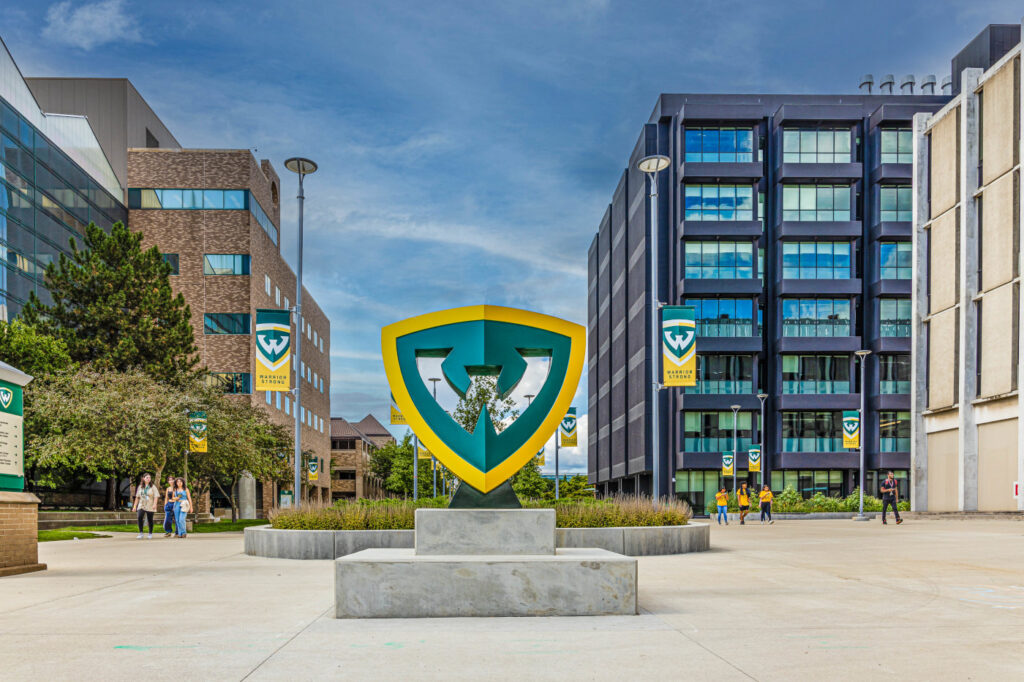About the University of Montana
The University of Montana (UM) is the flagship institution of the Montana University System, known for its research innovation and academic excellence.
Business Challenge
Remove manual, paper-based processes that made tracking purchases challenging and improve transparency.
Vertical
Higher Education
Location
Missoula, Montana, U.S.
Size
10,000 students, $580 million in annual revenue
Why JAGGAER
Use a digitized, user-friendly system to automate processes, improve visibility, and support compliance.
Through the JAGGAER One platform, the university streamlined and automated all procurement and tendering activities, resulting in:
- $3.6 million in savings
- A nearly 100% reduction of paper records sent to storage
- The enablement of just three employees to process 3,100 invoices per month
Executive Summary
Faced with manual, paper-based processes that were making tracking impossible, the University of Montana sought a digitized, non-paper procurement system. Implementing JAGGAER One increased visibility, eliminated the need for document storage, enabled handling procurement for three additional campuses with existing staff, and delivered significant cost savings.
End of paper, start of visibility
The University of Montana (UM) is a nationally recognized public research body, and the flagship institution of the Montana University System, serving around 10,000 students each year. Almost 1,500 of them are freshmen attracted to its dedication to research, innovation, and academic excellence. As a mid-sized university, UM’s annual revenue of over $580 million goes hand-in-hand with substantial procurement activities across four campuses.
Over a decade ago, it was challenging for UM to manage procurement and payment processes because the entire system was manual and paper-based, making it inefficient and lacking visibility. Departments frequently bypassed formal transactions for smaller purchases by processing payments directly through invoicing. This left procurement teams unaware of the transactions. However, even when procurement was involved, they would often receive purchase requests without any prior knowledge of them, positioning the team as facilitators rather than strategic partners.
Tracking spend was challenging, and its disjointed nature hindered visibility and control over university expenditures. “Everything was paper, everything was manual, and tracking items was next to impossible,” comments Bob Hlynosky, Director of Procurement Services at the University of Montana. In short, the organization needed to improve transparency and efficiency.
Investing in Automated Workflows
In its search for a digitized system to address manual processes and lack of visibility, UM evaluated various solutions before selecting JAGGAER One, which was perfectly placed to meet all their needs. The partnership began with the launch of JAGGAER eProcurement, rolled out to all departments simultaneously, followed later by JAGGAER Invoicing and JAGGAER Contracts.
While the procurement team worked closely with JAGGAER to refine workflows and processes, they found the system user-friendly enough to manage the training themselves, and user adoption was supported through continuous monthly classes. “Once people get used to using it, like with everything new, they like it,” says Jody Parrow, Associate Director of Procurement Services at the University of Montana. “It’s an easy platform to use.” This simplicity means that UM manages the system largely internally. It also strategically turned off end-user payment/procurement privileges to ensure addressable spend is routed through JAGGAER, guaranteeing control and visibility.
“I can’t name many projects where one or two people can set up a platform that’s complicated, yet at the same time user-friendly enough so that we can either work with the JAGGAER staff or do it ourselves and create a system that works for what we need,” says Bob. “I would challenge anyone to say that they do this with any ERP system. Good luck trying to do that by yourself.”
A key aspect of the JAGGAER One Platform was its ability to centralize various procurement activities. By implementing eProcurement capabilities, UM established a shopping home page that now acts as the starting point for any purchase and helps users determine the necessary processes, whether they’re bids, contracts, or short-term agreements. It also enabled access, in one place, to all necessary reviews and workflows that involve other departments—such as human resources, security, facilities, and capital assets. For example, automated and customizable workflows were set up to route requests to experts for necessary vetting, such as IT for software purchases. This type of centralized and streamlined compliance ensured that proper procedures would be followed before any purchase was made.
“I can’t name many projects where one or two people can set up a platform that’s user-friendly enough to create a system that works for our needs. I would challenge anyone to say they do this with any ERP system. Good luck trying to do that by yourself.”
— Barry Zimmerman, Deputy Purchasing Manager, Multnomah County
Delivering Savings and Efficiency
Implementing JAGGAER One delivered significant benefits to the University of Montana. First, procurement has become more efficient, giving a team of three the ability to manage processes for the entire Missoula campus, with its 1,000 active users in the system, and even taking on the purchasing for three additional campuses without requiring new procurement officers. This efficiency is driven by automated workflows and the digital mail room, drastically cutting time previously spent on manual, paper-based tasks and storage. The team now processes approximately 3,100 invoices per month, handling this volume with fewer staff than a decade ago. What’s more, the processing turnaround time has decreased, speeding up payment cycles and reducing potential late fees by an estimated $900,000-$950,000.
Other financial gains can be seen through contract consolidation and focused spend. For example, consolidating upwards of sixty photocopier contracts to just one resulted in estimated savings of up to $150,000 annually on printers alone. Steering spend through the platform also yielded an estimated $40,000 saved on Amazon purchases in one year, while the move to digital processes resulted in $19,000 in e-signature savings. At a larger scale, such numbers might not appear significant to the average person, but combined, they add up to impressive savings. While precise numbers are still being tracked, total procurement savings are predicted to reach $3.5 million this year.
Beyond cost, the platform enhanced operational effectiveness. For example, transparency has improved dramatically. For both the procurement team and campus users, the platform offers visibility into every workflow, allowing tracking of requisition status. This is supported by business analytics, which helps the team identify and address bottlenecks as well as find areas for process improvement.
“The beauty of the business analytics that JAGGAER offers is that I can look at processes to see what’s slowing approvals down,” says Jody. “I can look at individual departments to see if they’re not answering their emails or looking at their notifications. Business analytics gives us the ability to see any sticking points and then start to really dig in.”
The centralized nature of JAGGAER One enabled the digitalization of all documents, reducing physical storage needs—30 boxes of paper annually at fiscal year-end—and helping the university align with its sustainability goals. And the visibly noticeable result has been the elimination of paper processes. “I have zero boxes of paper to send to storage,” says Bob. “There used to be piles outside the door—bids, purchase requests, everything. I can’t even tell you the last time I had a box that I had to take to storage. Invoices have maybe one or two boxes now. So, between us, we’ve pretty much cut away all our paper. I am sure the trees are happy too.”
The long-standing relationship between UM and JAGGAER means that the procurement team is very well-versed in all the platform’s capabilities but is also on the lookout for more improvements. Next, UM plans to add JAGGAER Supplier Management capabilities, including new registration, Taxpayer Identification Number (TIN) matching, and potentially bank validation, aiming to consolidate systems and reduce data translation issues.
Conclusion
Through its use of JAGGAER, UM has been transformed into an efficient digital operation that aligns with the requirements of an open records state while simplifying work for the procurement department.
“Being able to control workflows, being able to digitize all documents, and having the visibility as open as we want it to be, has given us such a huge lift in getting out of the mundane,” concludes Jody. “Things like putting files and file folders together and boxing them up at the year-end. We just don’t have to do that. Everything we see and everything we do is visible, and this visibility allows us to be more efficient and to get us to where we are. As it would any institution.”



